On the day the British Government announced that the sale of petrol and diesel cars will be banned in just fifteen years’ time, I decided to take the new Jaguar I-Pace for a visit to its home turf in Gaydon, Warwickshire. Well, to be more precise, just across the road from Jaguar’s HQ — a visit to the British Motor Museum. This gem of motoring history is worth a stopover if you are driving north on the M40 motorway. I packed the compact Leica Q2 as a suitable tool to record the occasion
This was my first extended test of the car. Yet, after returning home to write this article, I am wondering if I did the right thing in buying an all-electric vehicle. Or, more precisely, I wonder if I did the right thing in not buying a Tesla. It’s all a matter of the ease, or otherwise, of charging the thing.
Infrastructure to blame
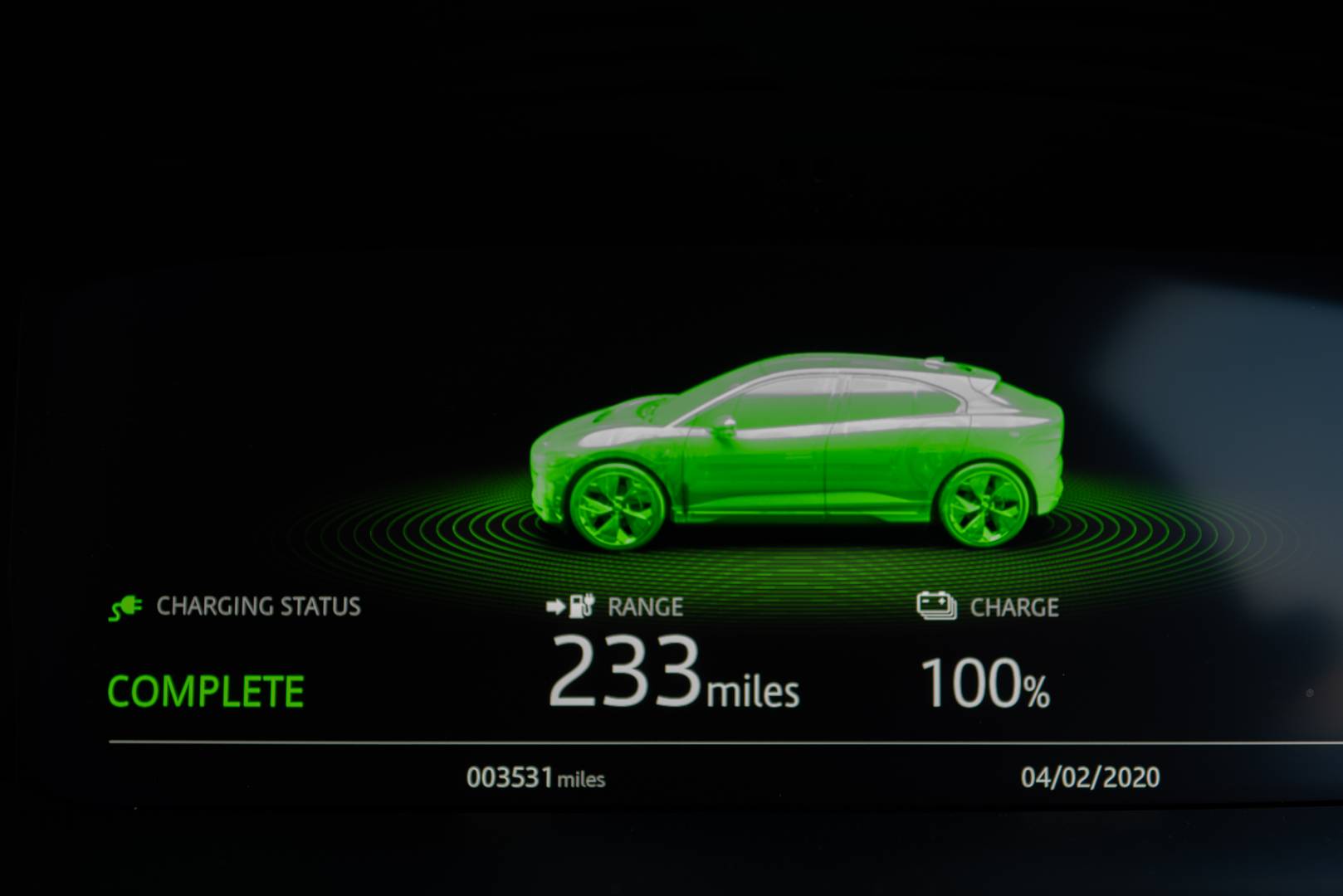
Make no mistake, it is not the car that’s the problem. I absolutely love the I-Pace and it is a wonderful car to drive, with some of the best driver-assistance systems I have come across this side of a Tesla.
And it has some excellent instrumentation, including the brilliant HUD display, that I find more appealing than an iPad perched in the middle of the dash. No, it’s the charging that is the most frustrating aspect of owning a Jaguar, and this failing is magnified in comparison with Tesla. I knew that and you all knew that, but the situation is possibly worse than we imagined.
Without a doubt, the charging infrastructure is the single most important factor when you buy an electric car. Tesla had it right from the beginning; the rest of the industry is playing catch-up and making a bad fist of it. As we shall find out.
Nine-thirty on a bright winter’s morning and my halo was firmly in place as I unplugged the Jaguar with its “full tank” of 233 miles. Over the first few days of ownership, this estimated range had hovered around 246. But a dose of my driving style over the weekend, which included substantial stretches of 70-mph highway, and the car’s computer had decided I was worth only 233 miles on a charge. It will soon be less as I drum up more highway motoring. Fact: EVs sup juice alarmingly at sustained highway driving at speeds over 70 mph.
Seasoned EV owners call this range display the GOM, or Guess-O-Meter, because that is precisely what it is.
It’s worth mentioning at this stage that the Jaguar has an “official” range of 298 miles although the manufacturer admits that this is unrealistic and that the real-world maximum is up to 250 miles. Factors such as terrain, wind, temperature, size of wheels and, of course, driving style, all have a remarkable impact on these figures. My car has 20in wheels, for instance, whereas the smaller 18in wheels on the base-model car would add some 8 per cent to the range. These are factors you seldom think about with a petrol or diesel car. But they are important considerations for the EV owner.
Significantly, Porsche has just introduced the alluring all-electric Taycan with an official range of 201 miles. Yes, 101. What are they thinking of? Imagine what the real-world range is likely to be, given the typical Porsche owner’s heavy right foot. In fairness, the Taycan accepts faster charging than the I-Pace and a special arrangement allows one-card access to a multitude of charging systems. Nonetheless, I sense there will be many disillusioned owners after they’ve shelled out their £86-130 grand and then find themselves grovelling in a remote corner of the car park fighting over the one available fast charger.
Best laid plans
The day’s plan was to drive the 86 miles to Gaydon, plug in the car round the back of the Museum (for I had done my homework and knew that there were six charging pods available to visitors), take some pictures of the exhibits and drive straight back to London. A modest little excursion of 172 miles, and seemingly well within the GOM.
Plans of mice and men soon came into play, however.
I arrived at the museum at 11.20, having covered 85.8 miles. The GOM was showing a remaining range of only 118 miles, which means I’d used 115 miles of estimated range to cover 86 miles. I had 51% left, just about enough get me home, given a fair wind. I surmised. But I planned to stay at the museum for a couple of hours and this would be a chance to top up with juice. I drove around to the back of the museum in order to plug in the beast.
Snag No.1: Ford was hosting an electric car event and had reserved all the public pods, so no chance of topping up. I sought an interview with the museum’s manager and few choice words were exchanged, “outrageous” featuring prominently. Here we were, across the road from Jaguar’s headquarters, and I was unable to find a single charging pod for their pride and joy, the I-Pace. Maybe I hazarded “scandalous” as well, for it is little short of that. By this time my halo was slipping alarmingly.
Gumption
You would think, wouldn’t you, that Jaguar could have had the gumption to install a bank of public fast chargers near its HQ as a PR exercise— less than two miles from a major motorway. It’s the least they could do and there’s plenty of spare land around. As far as I know, they do have many slow chargers inside the grounds, but these are presumably restricted to factory staff and visitors. Poor old Joe Public with his I-Pace is seemingly beyond the pale.
I curtailed the museum visit after bagging a few pictures of the products of the once-mighty British motor industry. I was keen to continue the experiment with the Jaguar. I foresaw, rightly as it turned out, some dillydallying while a-charging on the way back.
At 12.30 pm I set off back to London. Stopping at the Cherwell Valley service station, some 23 miles south of Gaydon, I noticed the GOM was down to 77 miles. I thought I’d try replenishing the tank while enjoying a coffee. However, as I had discovered at other service areas, there is no signposting to the electric vehicle charging points and it was quite by chance that I stumbled upon the two chargers tucked away in a corner next to Gregg’s the bakers, both mercifully vacant. I was definitely feeling like a second-class citizen.
One was a fast 50kWh charger (half desirable, it should really be 100kWh or more), the other was rated at the slow 7.2kWh (not desirable). This is the life, I thought nevertheless, as the halo righted itself and hovered above my head encouragingly. I decided to try the slower charger just to see how it would perform. I knew it would be dire and so it was. These 7.2kWh chargers are ok for home use (I have one in my garage) a waste of space at a motorway service station when there could be a faster installation. Why do they bother? Perhaps it is to make the overall number of charging points in the country look acceptable.
Goody, 19 miles more
After 45 minutes, the maximum time allowed in one session, the Jaguar had supped a measly 5.9 kWh, enough for an extra 19 miles as disclosed by the Jaguar’s GOM. Mercifully, it cost only £1.77 but the whole exercise was a monumental waste of my time. Why do they even bother fielding so many 7.2 kWh chargers if they are so demonstrably useless? To charge the car fully I would have needed to make that coffee last some seven or eight hours, assuming I hadn’t been drummed off the charging point by a horde of disgruntled EV owners before then. I can foresee charger rage becoming a feature of future journeys.
I now had 96 miles in hand for a projected remaining journey of around 65 miles. Ok, you might think, but I’ve already learned not to venture too far onto the thin ice. If something went wrong — a detour or a traffic snarl-up — I could even run out of electricity before the end of the journey. And it isn’t just a matter of coasting into the nearest filling station. Charging needs a PLAN. Best not to take chances, so I drove on down the motorway to Oxford services where I found a vacant 50 kWh fast charger. Since it was the only one, this was fortunate.
This was more like it. The 45-minute session (again automatically limited in the interests of fairness and unbloody noses) loaded 31.97 kWh and pushed the GOM up to 177 miles. It would have needed another session, 90 minutes in all, to take the car to fully charged. Still, this was more than enough to be getting on with and I still had 46 miles to cover…
From there the journey was entirely sans range angst and I arrived home in London with a healthy 137 miles in hand on the GOM, representing a remaining 61% charge. This was better than expected and shows the other side of the coin and how unpredictable these range estimates can be.
I’d driven 46 miles and used only 40 miles-worth of fuel! This is in direct contrast to the outward journey where the electricity use was well ahead of estimates. Why is this? I conclude that I had a headwind on the outward run but a corresponding tailwind on the way back. I’ll probably need to consult Admiral Lord Nelson on future runs.
Hit or miss
During this journey, I’ve learned that highway charging for all cars other than Tesla is shambolic. It is a disgrace in a country which has just grandly announced the death of petrol and diesel in 2035. While I counted no fewer than sixteen ultra-fast Tesla chargers at Oxford Services, there was just one 50 kWh charger available for the rest of the non-Tesla world. Had I been unlucky, with a low tank and someone already charging, I could have been stuck for hours.
Worse, this one charger could have been broken (as, apparently, is often the case, apparently) and I could have been there for days, plugged into the microwave socket at Gregg’s the Bakers. It takes 30 hours to fill the tank from a domestic 240-volt socket, a lot longer if you are in the USA and have only 110 volts to hand.
A further annoyance is the plethora of different companies offering charge points. I have a wallet full of RFID cards already and the whole system is a three-ringed circus, deeply in need of reform and coordination.
A 7.2kWh charger, which constitutes the majority of available stations, especially those in supermarkets and other facilities, is good for adding about 22 miles of range to an I-Pace in one hour. The faster 50 kWh version will provide around 125-150 miles in an hour although, in practice, it seems that there is a general 45-minute time limit on the use of these public chargers. So that’s 110 extra miles at most (less thirsty cars than the Jaguar will do better). You can initiate a second session and fill the tank, but be prepared for fisticuffs if there’s someone else waiting for the only charger.
As a result, once you’ve exhausted the full charge you leave home with, you could be reduced to hopping from charger to charger every 80-100 miles. This is by no means the Utopian world of electricity we’ve been promised.
The Jaguar can be charged at up to 100 kWh (with the promise of faster speeds following future software updates) but there is only a handful of such chargers in the whole of the UK, none of them convenient for me as it happens. An hour on one of these speedy devices should be good for a full range. In practice, since you are unlikely ever to arrive with an empty battery (for your own sanity), a 45-minute charge should be fine.
Tesla kudos
Tesla has clearly shown the way. I suspect Tesla owners use motorways without the slightest tremor of range angst. They can run down the tank and be fairly confident in finding an unoccupied charging point — and a very fast one — at the next service area. Owners of Jaguars and every other marque on the market are left collectively scrabbling around in the corner of the carpark with, at most, two fast chargers to choose from. If they are working, and that’s another worry.
Clearly this is something of a disaster. Instead of placing unrealistic targets for the binning of fossil-fuel cars, the Government should be investing in the charging infrastructure and offering other incentives to owners of EVs. At the very least, ministers should be insisting that the industry gets together to fund a Tesla-like array of fast chargers at every service station if there is to be any chance of meeting these targets.
Annoyingly, the solution is there and visible at every bank of Tesla chargers. It’s just that the rest of the world hasn’t caught up.
It is beyond belief that Jaguar, Mercedes, Audi, Porsche — not to mention the many other electric car manufacturers — are now churning out vehicles and extolling their desirability without, seemingly, a thought for infrastructure.
I am sure this isn’t actually the case, they must be worried; but I have yet to see any local evidence of any concerted effort. True, the German manufactures have combined their efforts in the Ionity consortium which is installing 100 kWh-plus chargers in Germany and other European countries. But, so far, there are few in Britain where these manufacturers are trying their hardest to sell their vehicles.
By 2035, when internal-combustion-engined cars and, even, hybrids bite the dust — in the UK, at least — we will need hundreds of chargers at every service station. By that time, of course, charging times will have decreased and the driving range will have extended in proportion. So, let’s say, a five-minute infusion of electricity for a range of 500 miles; then we would be talking. But it’s impossible at the moment. Without a doubt, though, technology for this type of charging and massive investment in the charging infrastructure must precede any fancy notions of scrapping petrol and diesel cars.
On the other side of the coin, by 2035 everyone with off-road parking will have their own filling station at home and this will reduce the pressure on the public charging network. And, presumably, every roadside parking space will by then be equipped with a charger. It better be!
What we need in the short term, even without considering the abandonment of the internal-combustion engine in 2035:
- A minimum of sixteen 100 kWh chargers at every motorway service station
- A single charging application or card which can be used on any system
In the medium term, the onus is on the motor industry:
- To achieve a realistic range of 300 miles, ideally 500
- To reduce charging times to no more than five minutes, partly by developing new technology and partly by introducing much faster, 400 kWh-plus chargers
Negative but optimistic
Although this is a relatively negative look at the electric car world, I think it is currently quite realistic. It doesn’t put me off electric vehicles but it does highlight the problems we face as a nation.
For 95% of my motoring, an overnight charge at home gives me 230-250 miles of range (depending on season and type of driving). I will seldom need to use public chargers. But for anyone who has a tight schedule and has a job to do and regularly drives long distances, EVs (with the possible exception of Teslas) are not yet ready for prime time.
Do I regret buying the Jaguar? No, I am enjoying it immensely and, as I’ve explained, I think I can live with the restrictions. I would undoubtedly have had less range angst with a Tesla, but I chose the Jaguar because it is a better car, both in design and build quality.
I’ve been on a steep learning curve over the past two weeks and I am just now beginning to get to grips with the reality of owning an electric car. I will continue to provide updates as I go along. Next on the list is a 500-mile trip, with side excursions, to Lancashire. That should be a testing time.
I just hope the friends I intend to visit will let me plug in my car. It is now the sign of true friendship: Being allowed to charge your car on the washing machine circuit.
And if we really do get unplugged, this could be the answer, below. An altogether more leisurely form of transport, giving one time to admire the countryside. Love the steering wheel.

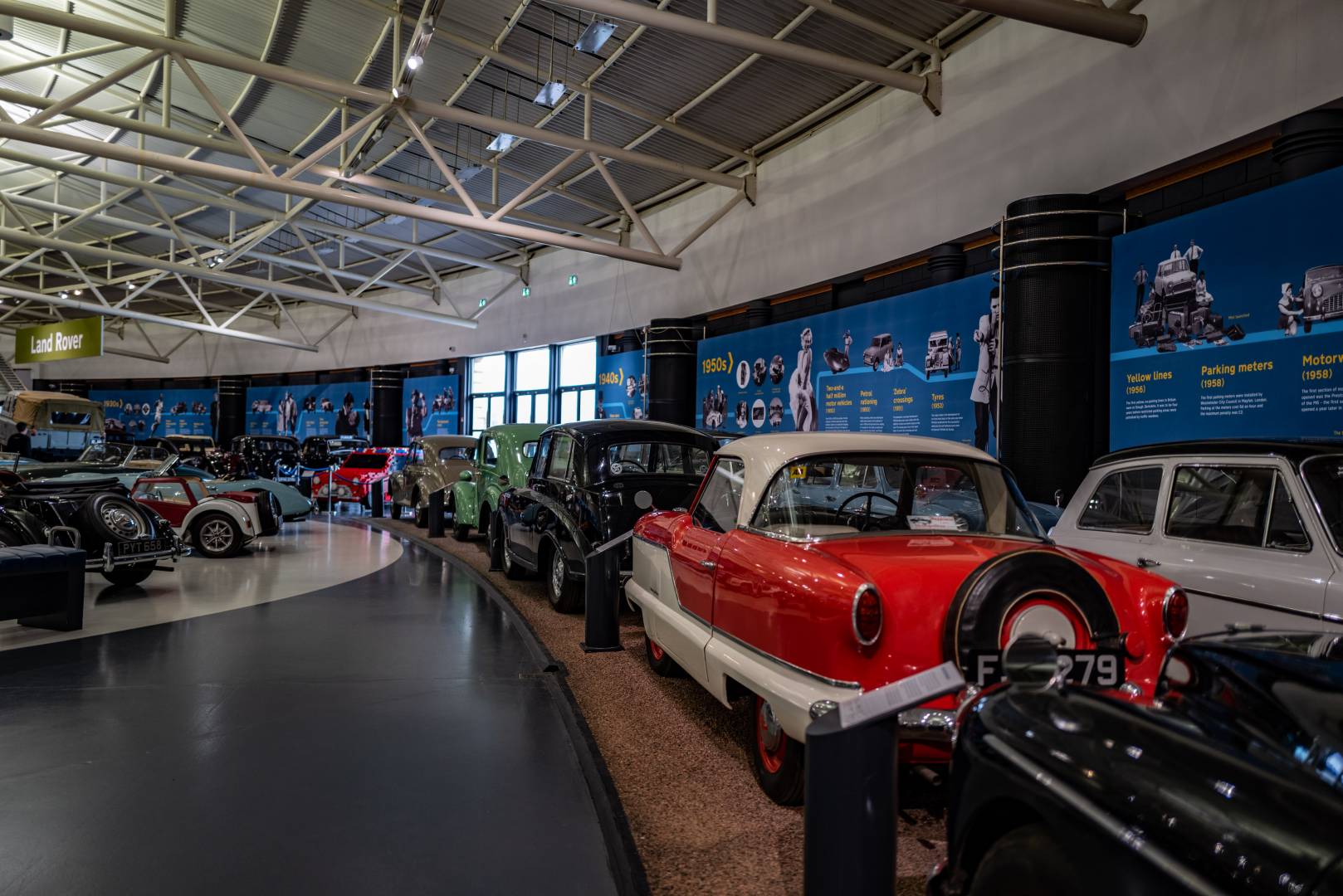


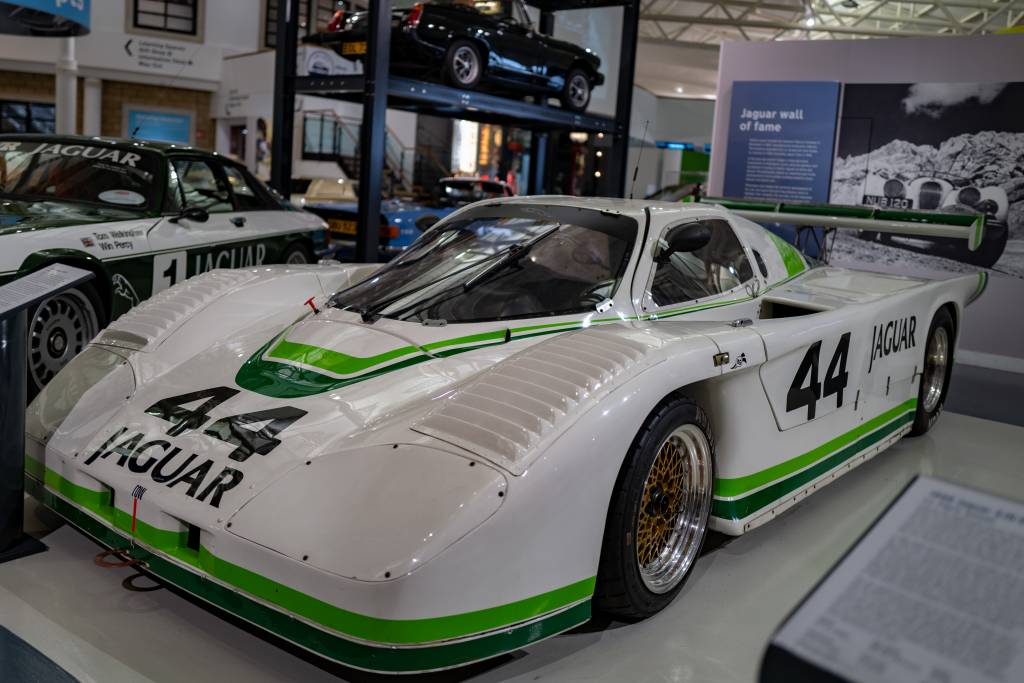
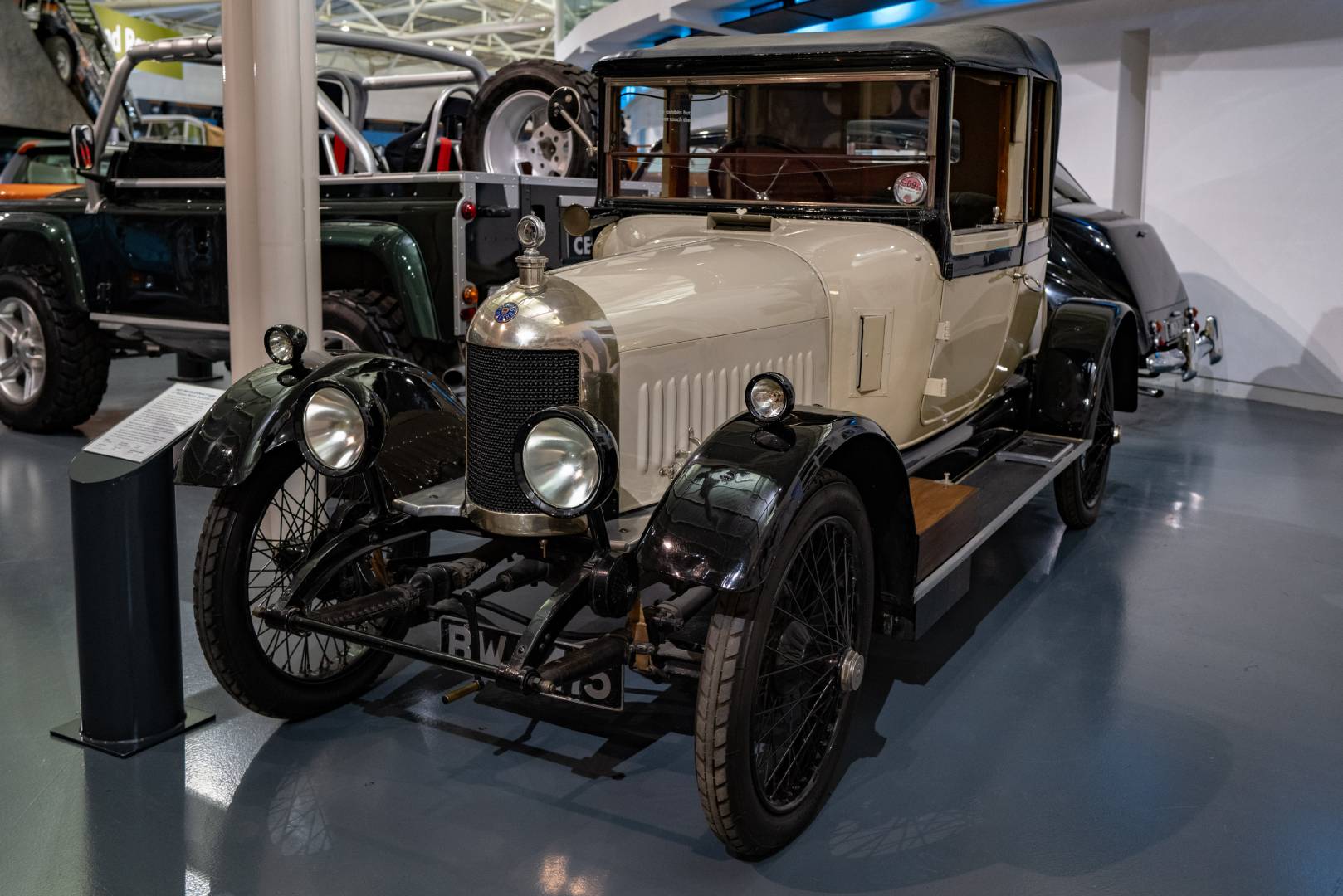
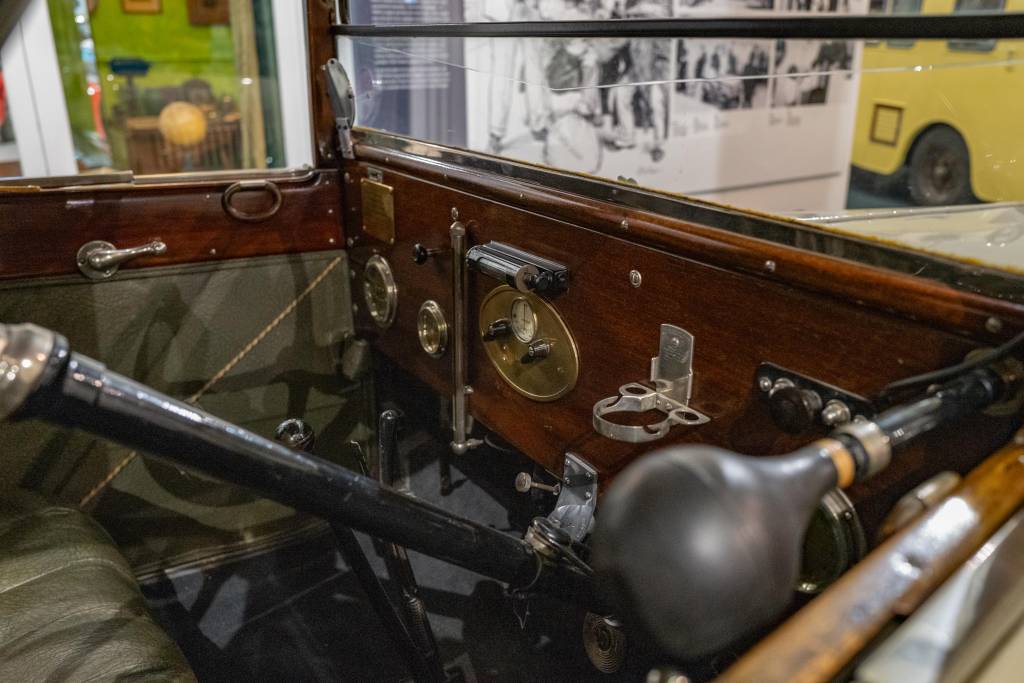
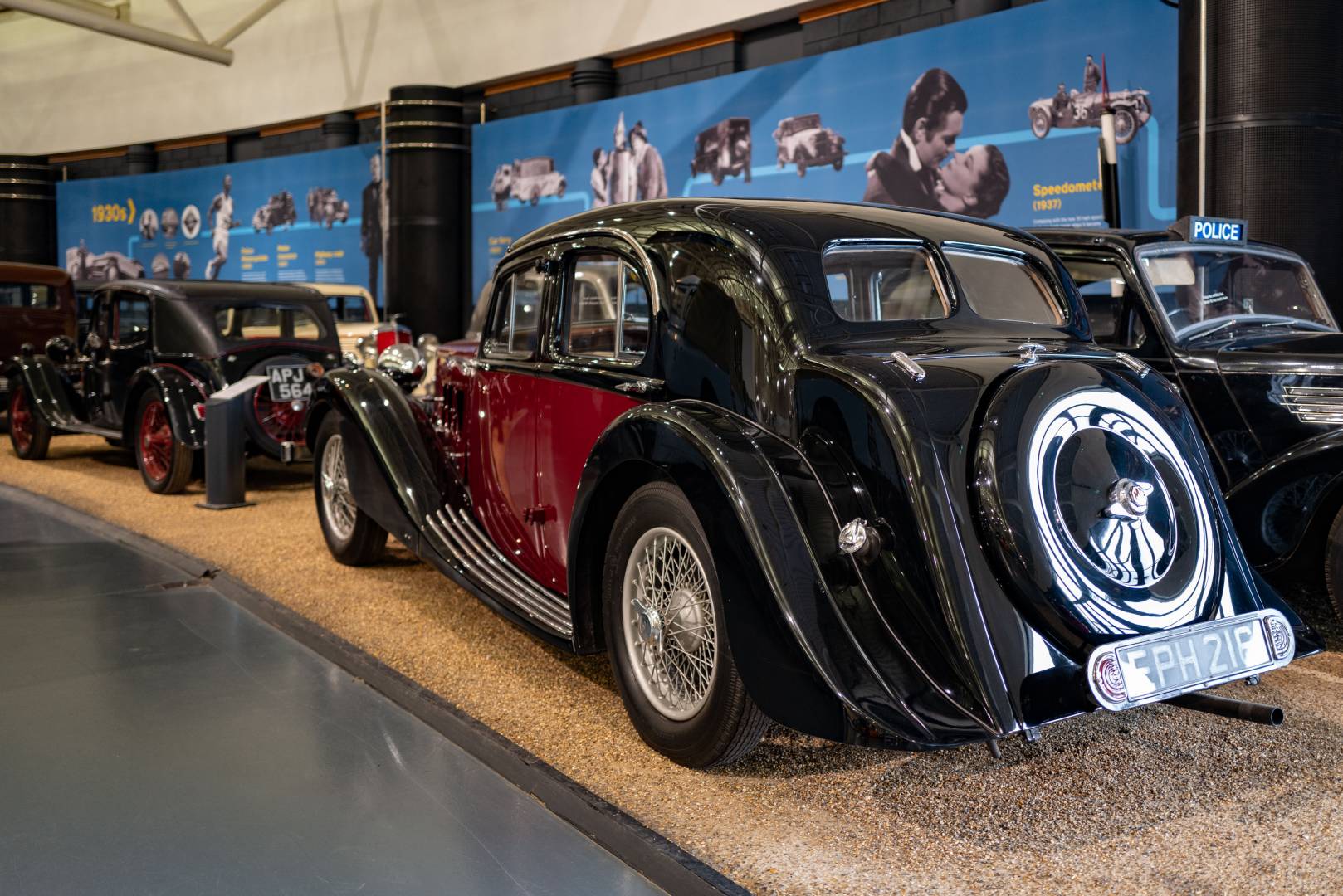

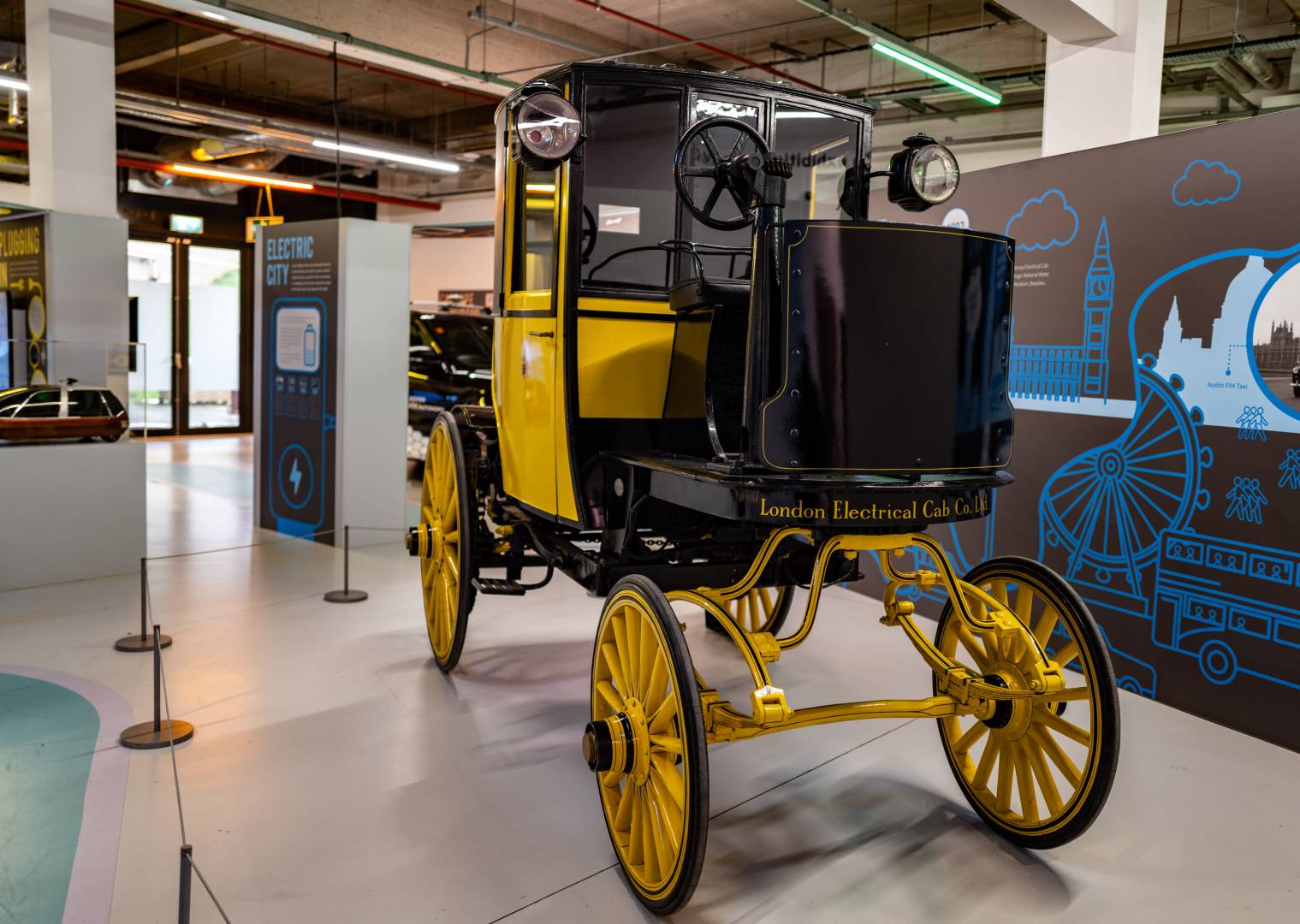
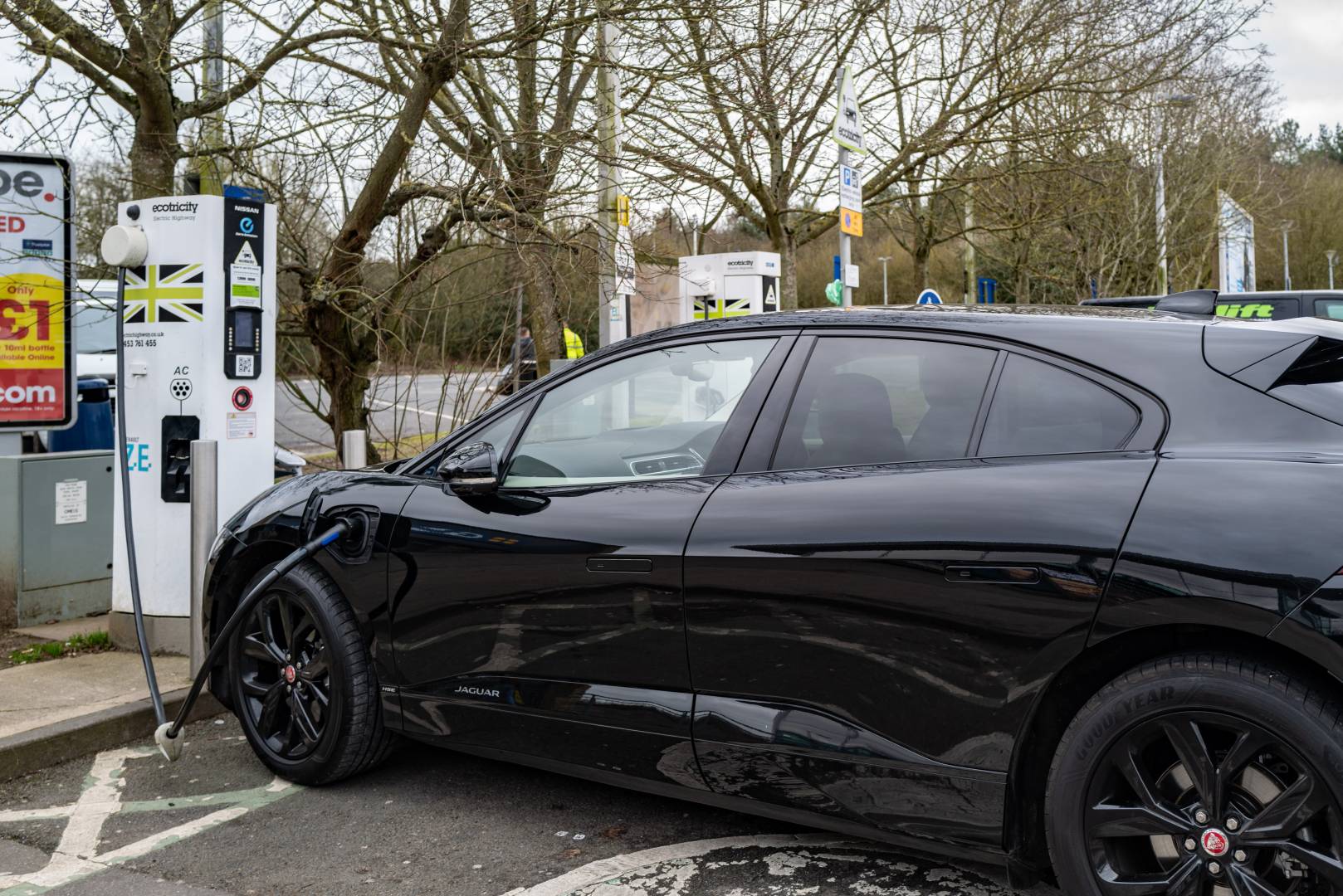
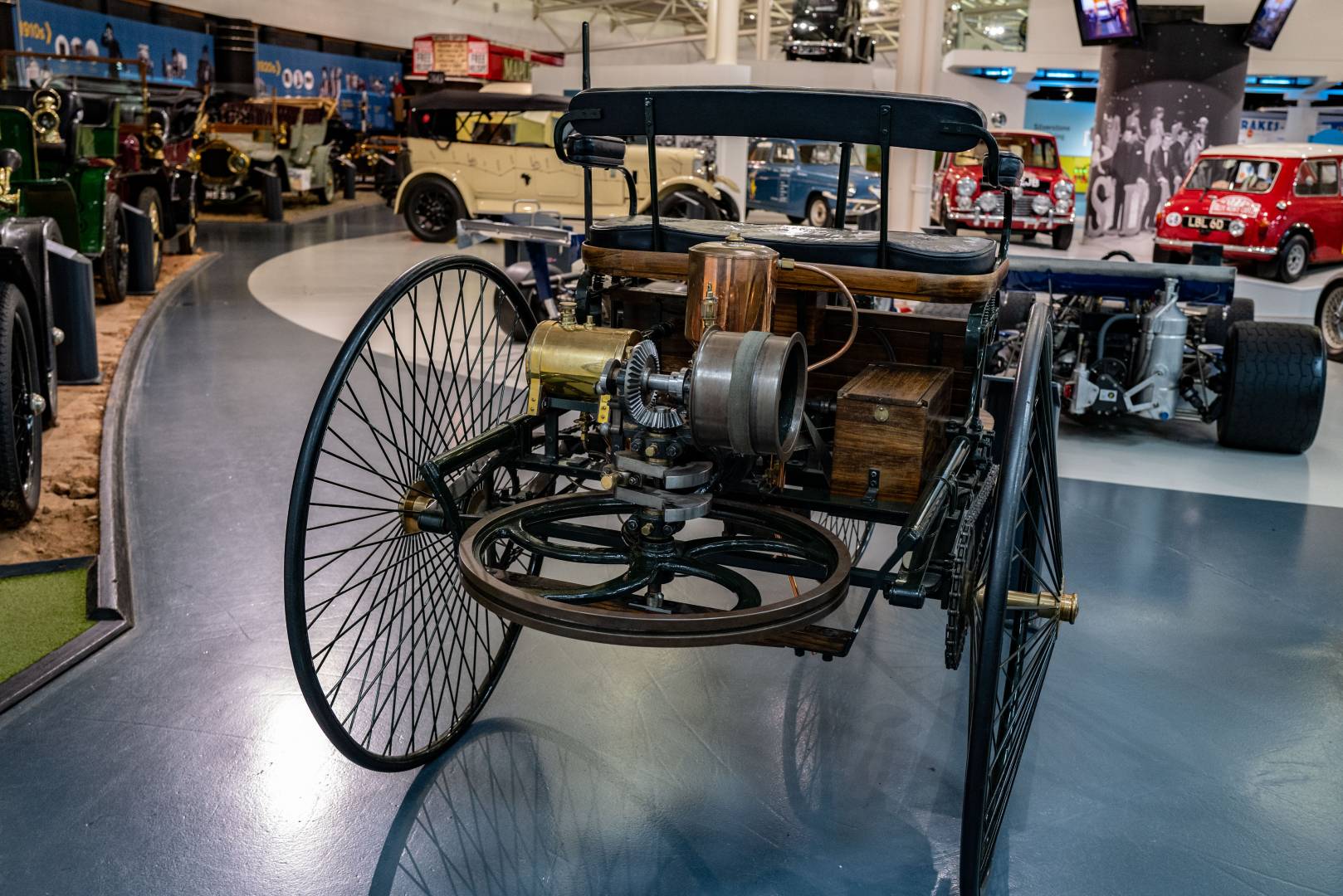
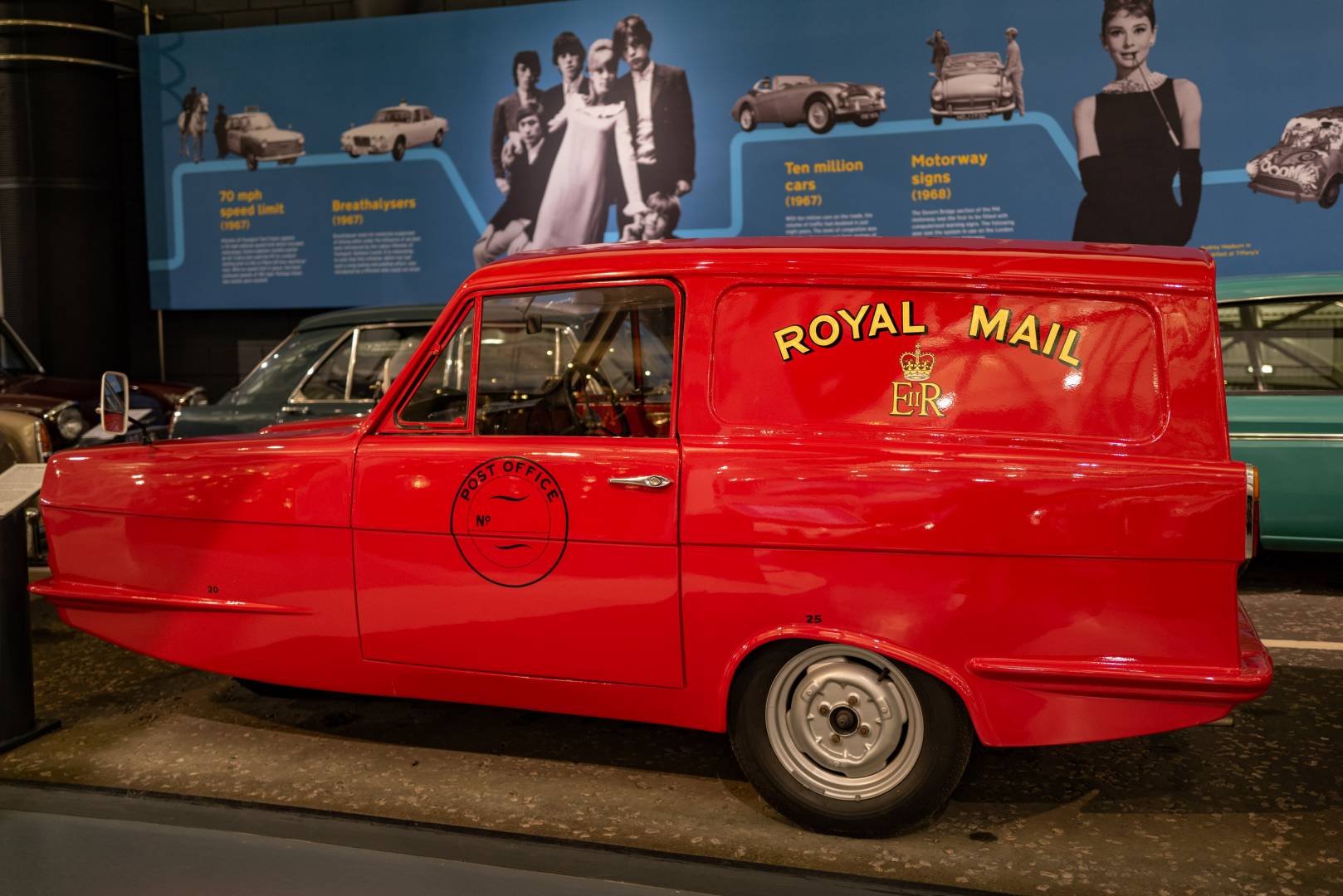
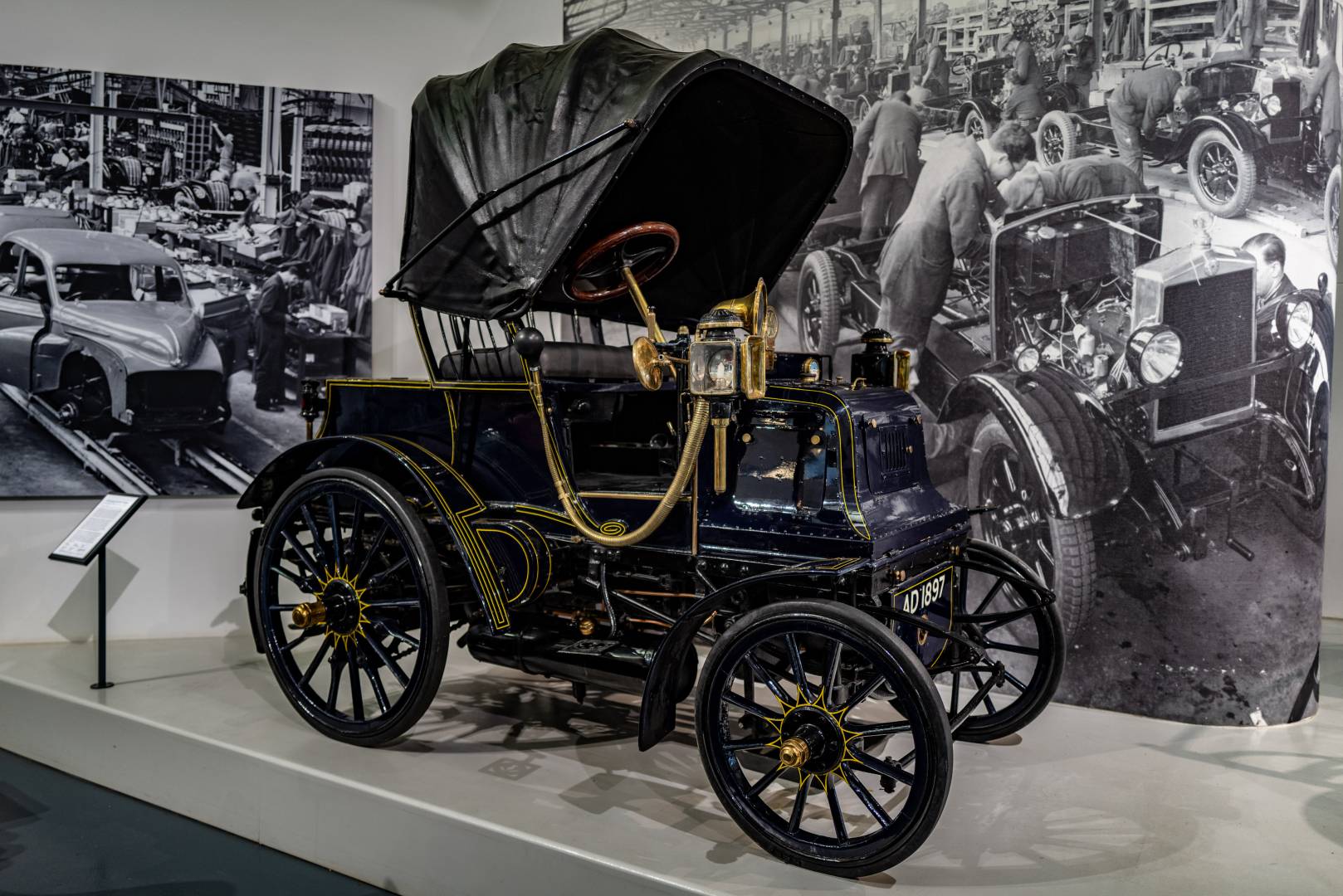
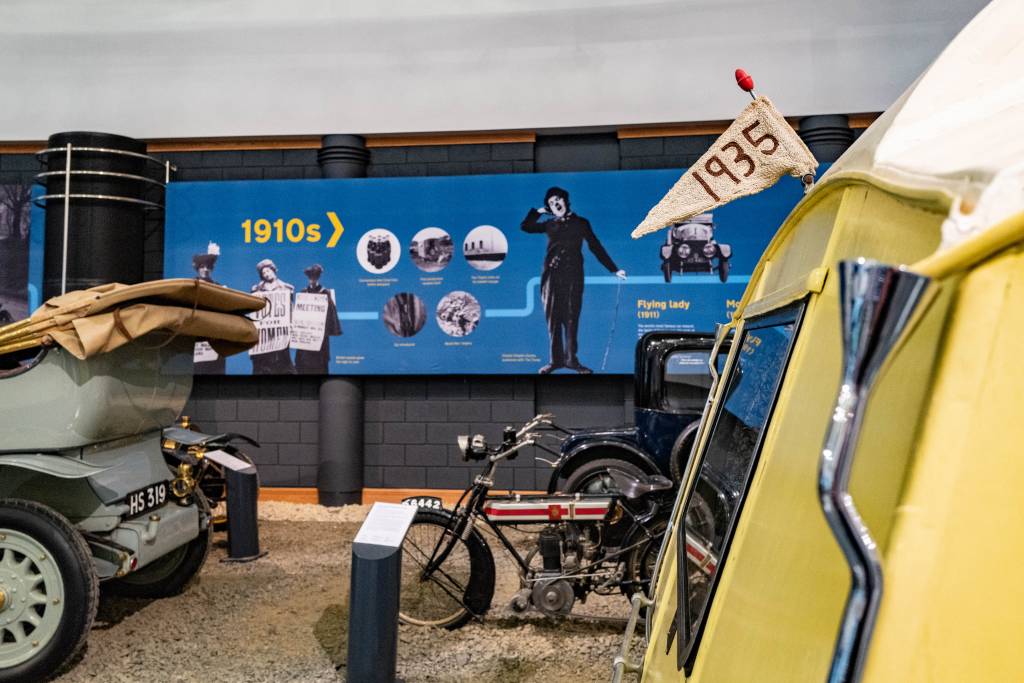
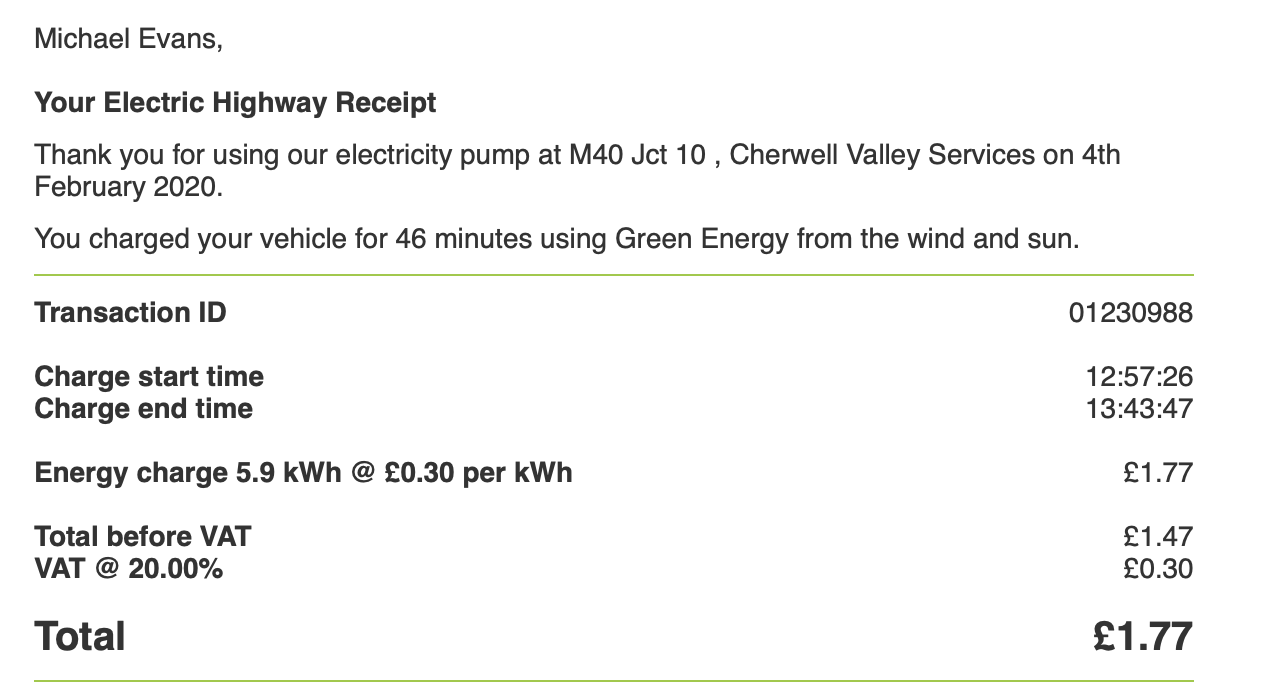
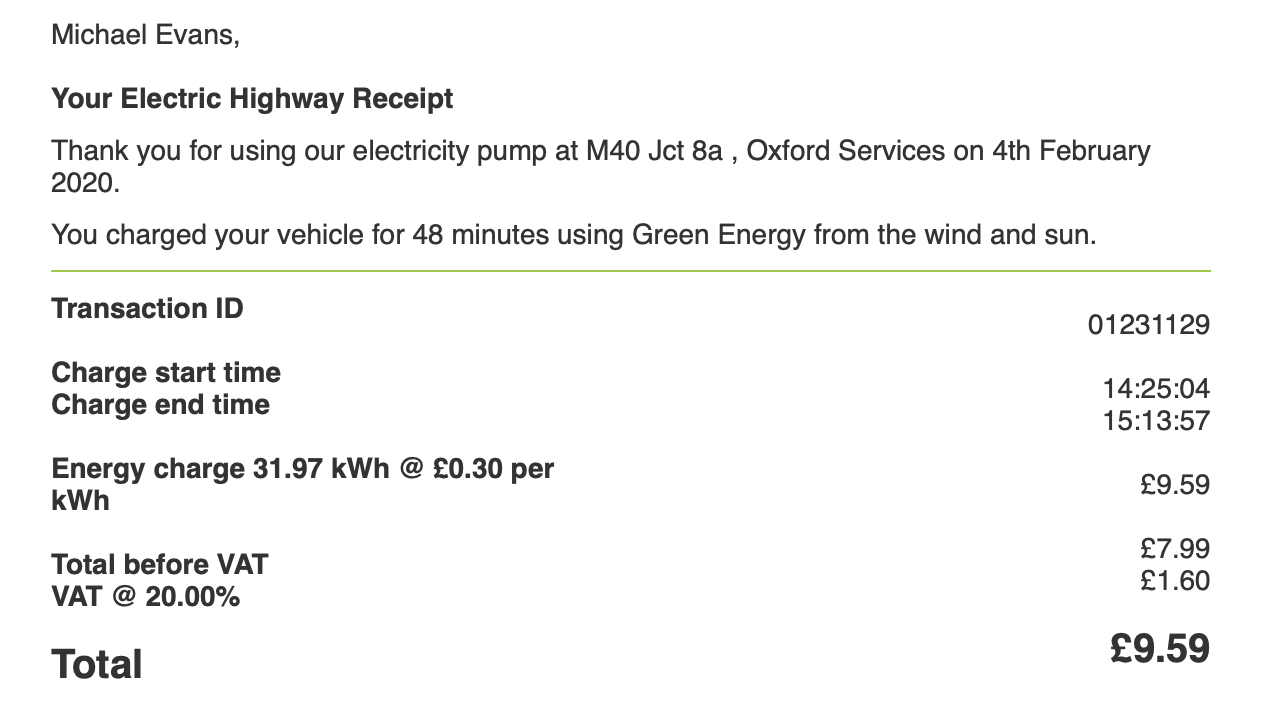
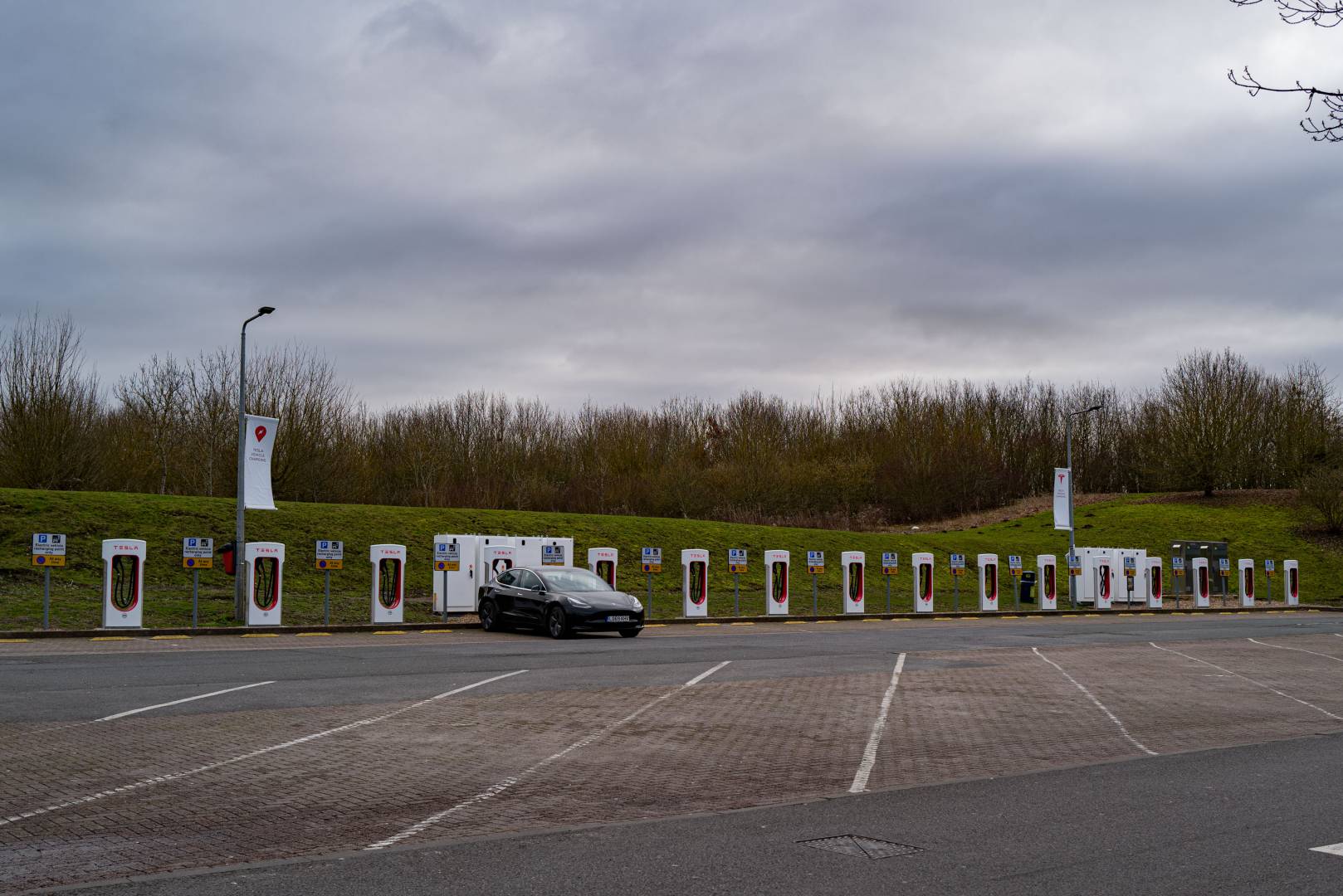
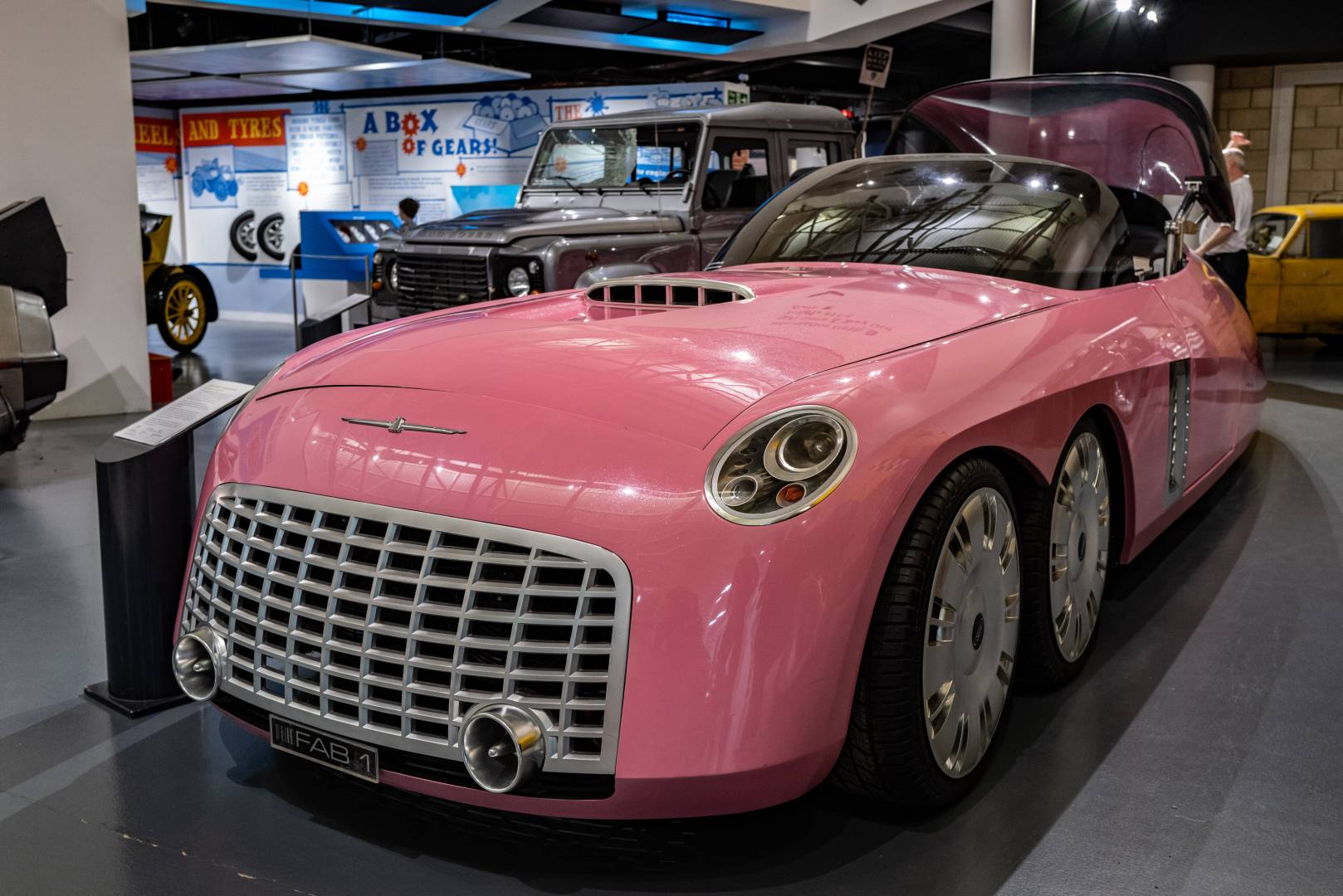
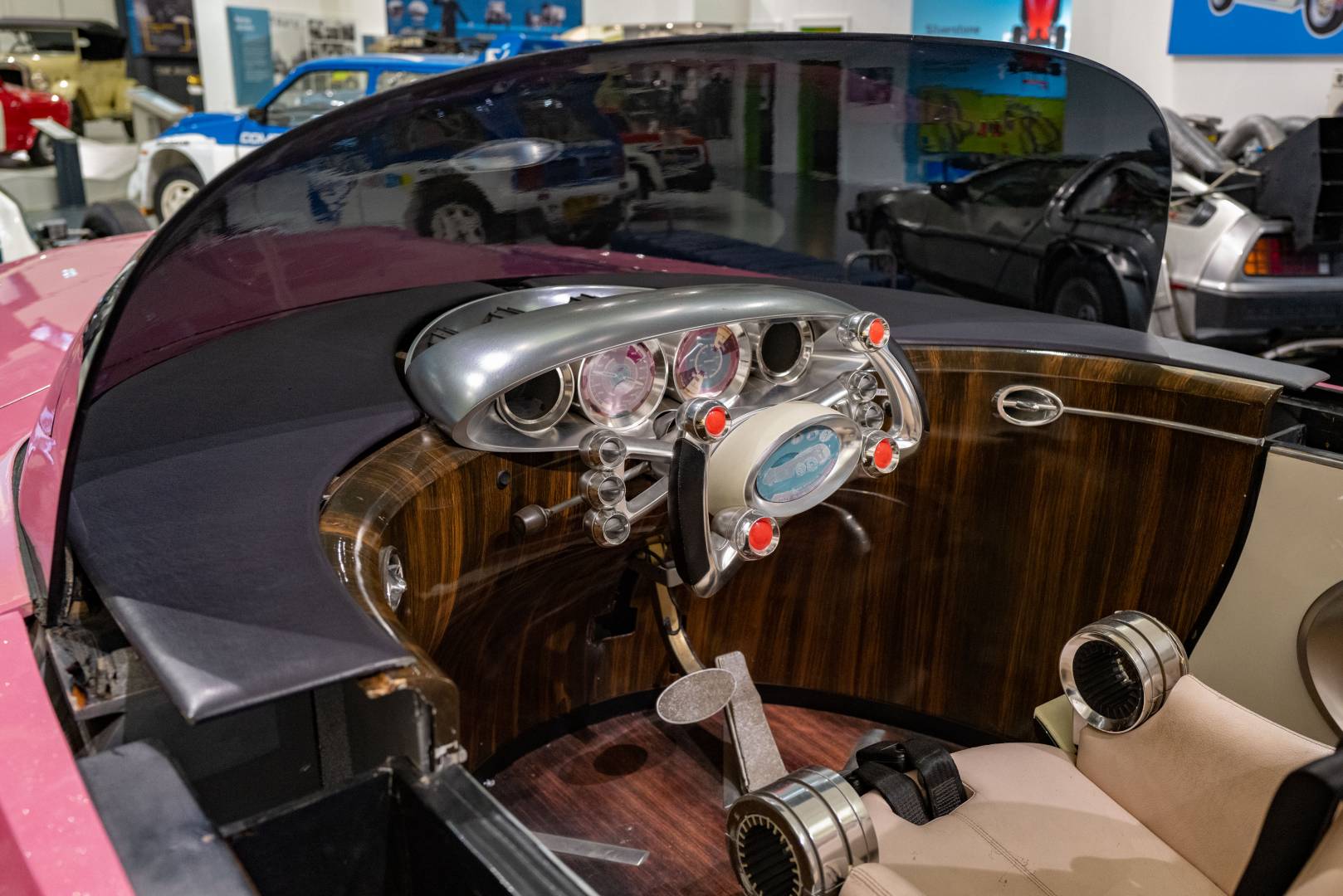
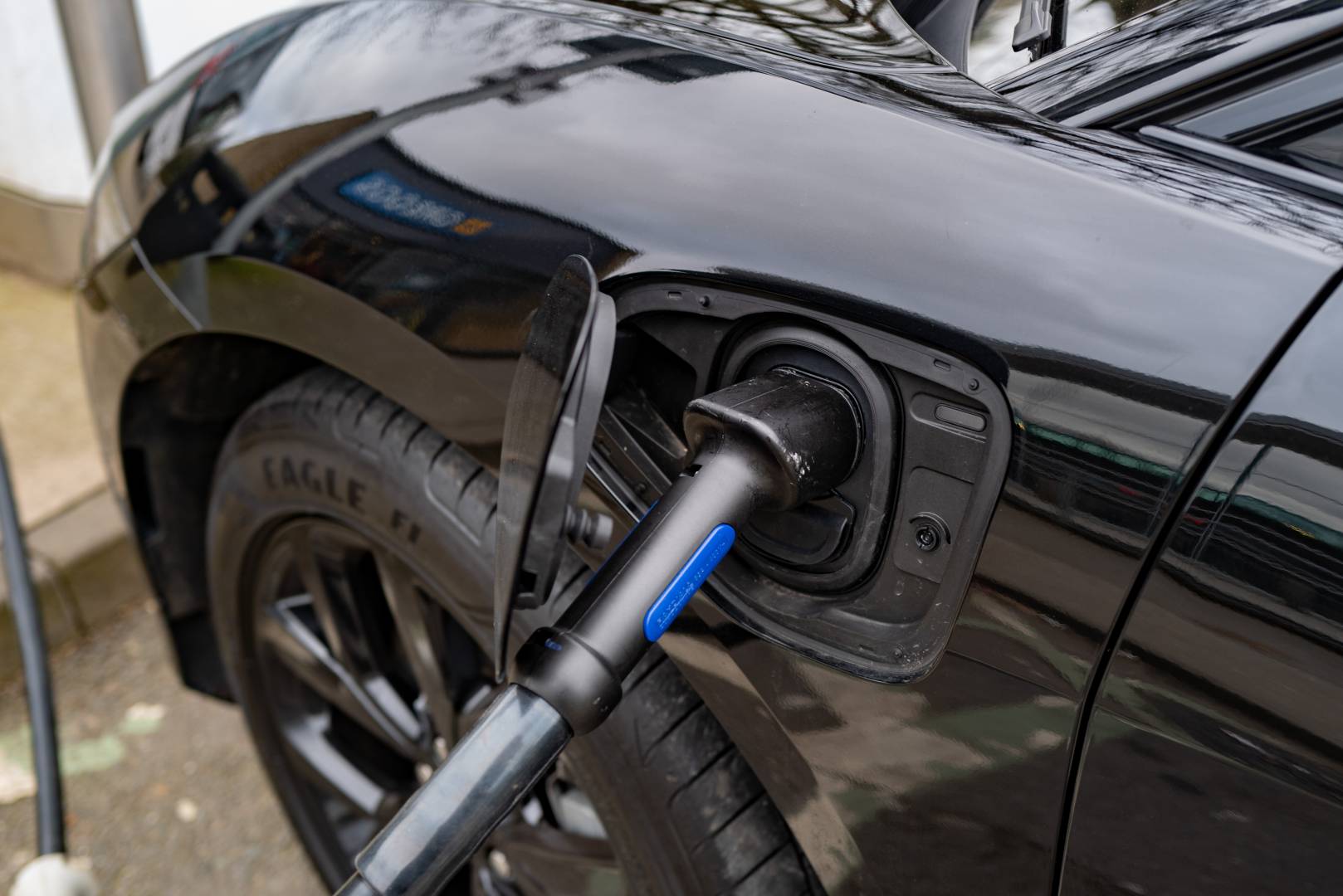
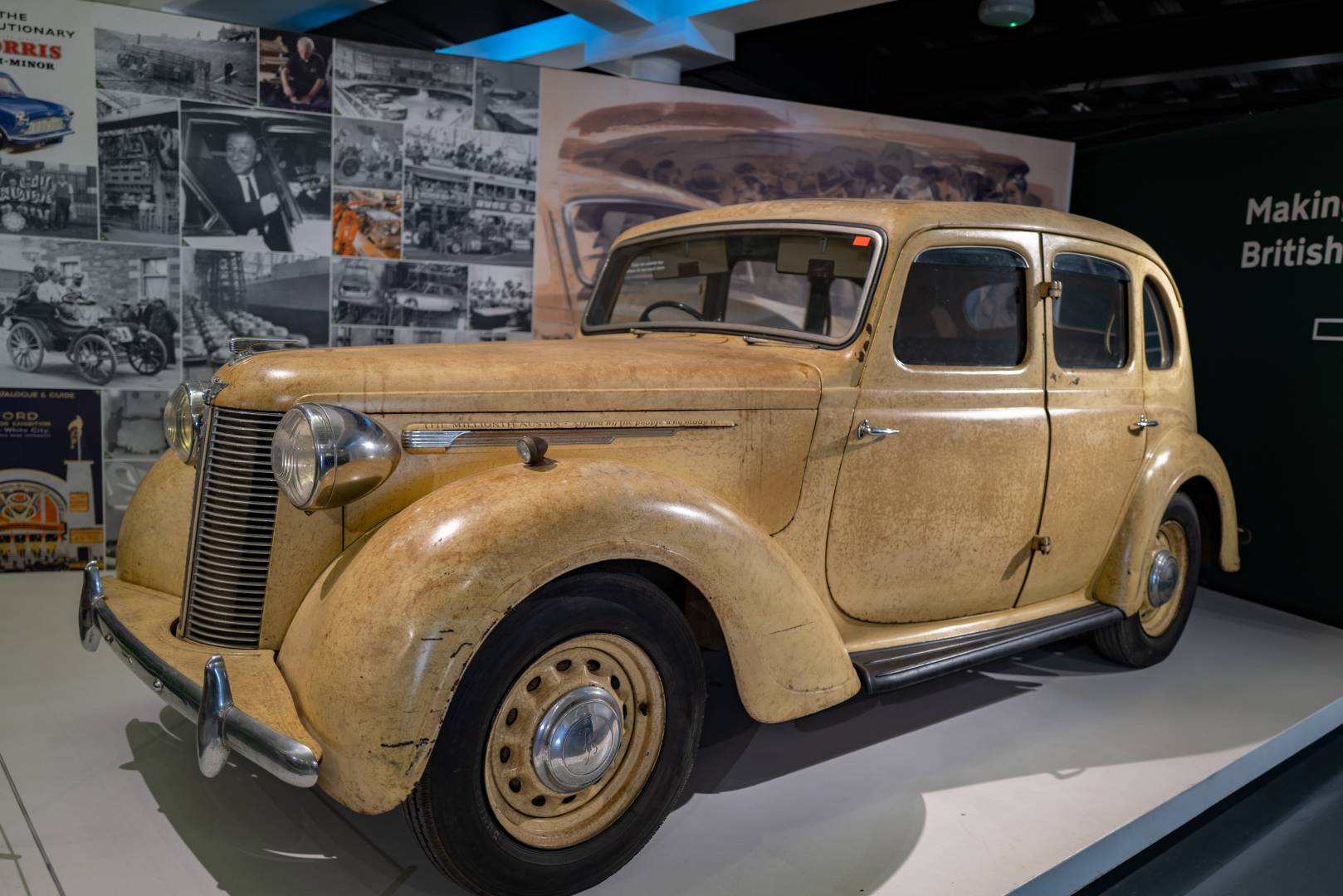
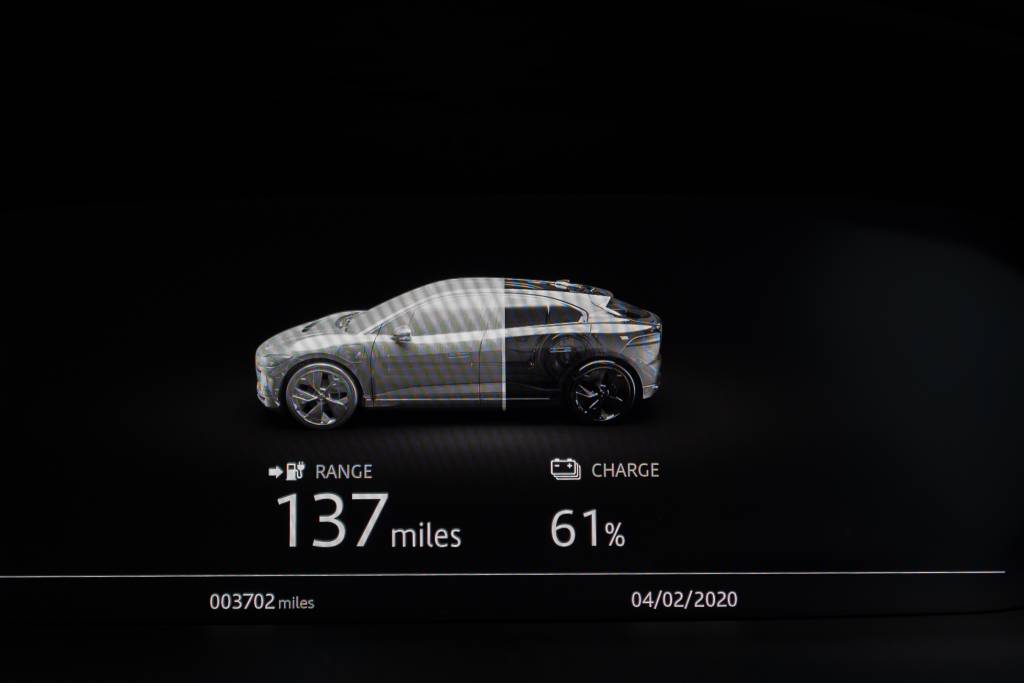

Thanks Mike
I am afraid that since I got a Q2 the CL is hardly used. I have never used long lenses much and seem to do most of my photography between 28mm and occasionally up to about 180mm max. So I find the lens quality and pixel count of the Q2 allows for cropping and the Q2 is perfect for me. I have had Ms from the first M6 onwards to the M10 but age means autofocus is more necessary now and the Q2 is perfect. Particularly with the firmware updates. it’s also very good in use as a manual focus camera, when you do want it.
Best regards, I enjoy Macfilos a lot Tony
Thanks, Tony. I have to admit that I also tend to pick up the Q2 rather than the CL. It’s a couple of hundred grams heavier but I find that cropping up to certainly 50mm equivalent is good enough for me.
Very interesting. I have had an I Pace for six months now. Like you I love the car, range apart, it is probably one of the best cars I have had. But with my driving style ( I prefer not to use Eco mode as I find “Comfort ” mode is much closer to driving a typical Jaguar) now that it is winter my range has dropped from around 230 miles to 201. Driving a car that is smooth, silent and accelerates to 60 in 4.5 seconds doesn’t encourage a light right foot!
But I have never once regretted my purchase and look forward to driving every time. I just need to run a second car for longer journeys, as I can’t be bothered with the re charging shortcomings of the public network. It is a pity because if the availability of public charging was there it would be much better for me, financially and for the environment.
After three weeks with the I-Pace, I thoroughly agree with you. It is a wonderful car to drive and I don’t feel at all short-changed coming from a Porsche Macan. It handles superbly, has terrific performance and is also a pleasure to drive at slower speeds. The one-pedal progress thanks to regenerative braking is a revelation and I can’t see myself going back to an IC-engined car.
I certainly don’t do enough long journeys (that is, journeys where I can’t get back home in a couple of hundred miles) to justify a second car just for this. After all, it’s on the longer journeys that we really appreciate the I-Pace and its driving aids, so any long-distance replacement would have to compete. Since writing the article, however, I have revised my feelings on range angst. I now realise I don’t have range angst, I have charger angst. Once we can be sure of going into any service station and bagging a charger, irrespective of how long it takes, range angst will disappear.
Thanks for your comment. Incidentally, how are you getting on with your CL? I have you managed to find all the lenses you needed?
Mike
Percy Shaw. He reputedly had a television – and a crate of something-or-other – in every room.
Thanks for the name. I could have looked it up but I was too lazy. I remember seeing a documentary outlining his frugal lifestyle, despite being one of the richest people in the country. He invited all the neighbours in to watch TV. As we have said on occasion, they don’t make ’em like that any more.
Thanks for the pictures from Gaydon! It’s like one of my old, and sadly stolen, collection of Observer Book of Automobiles come to life. Some of these cars must make it to TV screens as old reruns of Father Brown, Granchester and Imspector Morse show a healthy collection of Austin’s, Rovers, Riley’s and Wolseleys.
One of the challenges for electric vehicles will come for flat/apartment dwellers with no parking. Can you drop a charging cable from the 15th floor to charge your car? Yet another infrastructure problem to be overcome.
This is indeed one of the biggest problems. In many cases chargers can be installed in the parking bays but this isn’t for everyone. Here in London, the majority of cars are parked in the street with no way of running charging cables. The government (or someone) faces the almost impossible task of installing hundreds of thousand, of not millions, of kerbside chargers. I do not believe this can be accomplished in 25 years, never mind 15. The mind boggles.
Mmm. The only sensible solution for “..the majority of cars … parked in the street with no way of running charging cables..” would be to do what Nottingham City Council has done with its electric taxis: bury ‘charging plates’ in the street, and modify the vehicles to induction charging while they’re parked. https://tinyurl.com/vedvnff
So just park it – if there’s any space available – and the ‘plate’ could interrogate the car for its identity (to discover who’ll pay for the charging) and it’ll then charge up automatically ..no cables needed, and every street a charging site.
That’ll mean digging up every residential street to install ‘charging plates’, or coils, or whatever ..rather disruptive, but only like installing hi-speed internet and TV cabling ..but with entire streets inaccessible while the road’s dug up and replaced. (No worse, I expect, than entire streets dug up in Munich to periodically replace tram lines.)
Yes, I didn’t mention induction charging but that could well be the future for most road-side parking. It should also be possible to install induction charging so vehicles can charge as they drive. Now that would be neat — your very own trolley bus.
That is the solution. It should be technically possible to have vehicles that charge themselves through the energy created by their own moving parts, particularly under braking, as with KERS https://en.wikipedia.org/wiki/Kinetic_energy_recovery_system
Formula One cars have had this for some years now.
William
Well, I am not sure about the further application of this, but most EVs, including my Jaguar, can be set to strong regenerative braking. This produces a very agreeable effect which, in most conditions, allows one-pedal driving. Once you get the hang of it, it is possible to judge the automatic breaking and simply feather the throttle as necessary. I am finding that I regenerate two or three units of electricity on an average drive. In stop-start traffic, it works best and, of course, will save on brake pads. As for being able to regenerate enough power to keep the car going, that seems contrary to the laws of physics. Anyone who figures out how to do this is on to A Good Thing. Like, for instance, the reclusive Yorkshireman who invented cats’ eyes.
Or do what is happening in London and other UK cities…
Lampposts (which already have power circuits to them) and bollards have charge points fitted to them so parked cars plug into the lamppost… small little type 2 connector flaps set into them quite unobrtusively. Only a max of 7Kw but perfect for overnight on street charging.
Much cheaper than an induction system…
William – pretty much every EV already has KERS as in regenerative braking, some also already have heat scavenging systems to heat interior and battery systems as required.
I see lamppost chargers here and there an I am never sure if they are a random largesse of the local authority or something requested by an adjacent EV owner. Do you know which? I agree that more needs to be done in direction but I am not clear how payment is made.
The Source London outlets are good in that they combine parking and charging and I’ve found them useful on a couple of occasions.
Mike,
They seem to be just normal chargepoints fitted to lamp posts from various of the charging firms, so you pay as you would do for that charge point provider. A quick google gave this article: https://airqualitynews.com/2019/05/02/1000-ev-charge-points-installed-on-londons-lamp-posts/
and it has a link to an article on zap map about them.
hth, S.
Thanks Simon. Everything does seem to be a bit haphazard and with only 15 years to go I have little confidence that we will be ready. I found one near where I live but the adjacent parking spot is not marked for EVs only, meaning they I can easily be blocked by inconsiderate parkers.
The article mentions a number of charging companies I didn’t know existed, with the exception of ChargePoint where I am already registered. I thought I had every app and every card but I now need to think again. This is something else that will have to change. One universal roaming account is essential.
Is GOM a ‘Guess O Meter’ ? In Dublin a ‘gom’ is an ‘eejit’ or an ‘idiot’ as the British might say. Can I mention another charging connection which has become universal? The ‘USB’ or ‘Universal Serial Bus’ became truly universal without any apparent input from Governments. Light bulb fittings are also fairly universal, but power sockets and, indeed, power ratings are not universal. As I mentioned before, where I live, the Government intends to ban the sale of all non electric vehicles in 2030. Apparently Britain intends to do the same 5 years later. Where I live, our GOMs will be in kms, but 100kms up the road, GOMs will still be in miles, which many young people here have never heard of. Looking at the re-emergence of the ‘aggressive nation state’ in various parts of the world it would seem that the chances of standardisation are quite low. The EU has been trying to achieve a standard for re-charging devices for electronic items, but one company stands away from the rest and that is Apple, which for reasons that are not obvious, has a connection point that is different to all the rest, even thought it will give a USB at the other end of the cable. I’ll leave it at that and just say a prayer for common sense.
William
There are two main charging connectors for the new generation of fast chargers. There is CSS, which is based on the slower Type-2 cable but with an extra (massive) two-pin plug under the main array. The other is Chademo which is used some manufacturers. It seems that most European manufacturers, with the exception of Nissan, are standardising on CSS, which is what I have in the Jaguar. Confusingly, at first, I noticed that the “pumps” have two cables, one on each side. One is Chademo, the other CSS. I imagined this would allow two cars to charge at the same time but it isn’t so. Only one can use the pump, so it’s a case of first come, choose your connector.
You lost me at CSS. My point was more general. I have some experience at standardisation in both physical products and wireless spectrum. Getting standards agreed involves governments and manufacturers sitting around tables and discussing what is possible and what the effects of such standards might be. This can take many years and endless rounds of meetings. National interest has to be left at the door for this to succeed. There are some ISO standards with the emphasis on safety eg https://www.iso.org/standard/68491.html. The full list is here https://www.iso.org/ics/43.120/x/ . I get the impression though that these standards are not yet a ‘done deal’ in the market-place. Will they form part of the upcoming multiple trade negotiations which the UK is embarking upon? This is not a political point, but therein lies the solution to some of the issues you have raised.
William
A nice car article and great images. I still don’t understand why they don’t make a 1000 miles battery (except some Telsa model if their advert is to be trusted) . Here people got electric cars for short distance trips, not long ones. There was an radio broadcast of a French journalist trying to drive to Portugal from Paris the other day. He gave up and rented a standard car after reaching the French Spanish border in a couple of days. A distance you cover within a day with a diesel or petrol car. I’m also worried about recycling the old batteries which contain a few noxious products. Burying them or recycling part of them doesn’t solve but displaces the problem. Why car manufacturers don’t develop hydrogen engine. I’ve seen some prototypes and they work. Sorry Mike if I’m a bit grumpy. Enjoy your Jaguar From the images you posted lately it’s a truly beautiful car.
I think a 1,000 mile battery will come, but there will have to be a revolution in technology. My Jaguar is all battery, in reality, and the same applies to Teslas and other cars. They are very heavy and getting an acceptable weight/range ratio is a challenge. Simply adding more batteries isn’t the answer because the extra weight reduces the efficiency and, to some extent, you don’t increase the range. However, 500 miles is within sight and there are moves to bump up charging speeds to 400 kWh. This would transform the market.
You are right that EVs simply transfer the pollution elsewhere — in generation of electricity and, increasingly, in the disposal of used batteries. I understand that the only way to deal with them currently is in landfill. Just imagine how that will work out in 2035 when every car sold in Britain as to be electric or some form of gas.
I’ll ask our daughter and son-in-law tomorrow, when we see them, what’s the range of the original little electric (‘E-On’?) BMW which they bought for trips around town and the school run ..and the range of the bigger electric four-door Audi they then bought for longer trips (..to Whipsnade, Diggerland, etcetera).
I can tell you that most of the original cars such as the BMW i3 and the Nissan Leaf has very small ranges, under 100
Miles. Most of the newer cars can manage 200-300, with some Tesla’s being a bit better than that. But, as with my Jaguar, range depends on so many factors. The Jaguar has an official 298 but this really just for comparison purposes, as with official petrol mileages. Reality, especially at motorway speeds is under 2/3rds of this.
Batteries dont (or very rarely) go to landfill,
they can be recycled but more importantly repurposed – the battery is made up of a number of blocks and each block a number of cells (I-pace has over 400) . it is generally individual cells that degrade – blocks can be replaced by the dealer and sent back to the manufacturer. a cell that doesn’t work efficiently in an EV (where space and weight are a premium) often works perfectly happily in a battery storage system where charging is slower and so is demand. A lot of the renault/nissan batteries are re-purposed into storage batteries attached to home solar, where there lower charge capability is less important (average home uses about 14-20KW/h a day (peaking at about 20Kw/h) with an EV battery being 60+ Kw/h and peak in the 100’s of KW/h- and not all of the home use needs to be covered by the battery). I expect tesla does the same with their powerwall products (for home and grid).
Thanks for this insight, Simon. I had read somewhere about landfill but now you mention it in have also read about repurposing which sounds optimistic.
Of course, the problem over charging these things is easily solved, as an early adopter, Mike is being spoiled, he is being allowed to drive his own vehicle. I foresee that eventually the current situation where vehicles have an owner/driver will be coming to an end, and it will be the hired driver that is in charge (geddit) of the levels in his battery.
Reading Dickens at the moment and nobody in London owned a vehicle, they all just hired the type of conveyance they required and paid per mile. So in a return to the historical norm, no waiting required… “I am sorry sir, the car seems to be running a bit low….”
“Oh, OK driver how much do I owe you?”
“That’ll be £5 sir, if you look sharp there is a fully charged driver just across the way, do you see him?”
I believe this is entirely political, it has not a single ounce of “science” behind it. The political solution to avoiding the purchase of a new Electricity supply infrastructure, is to take that freedom away on environmental grounds.
“The science is NOT settled.” The period where man was allowed free rein on the nation’s roads has been a huge issue for the powers that be, they even created Toad of Toad Hall as a precautionary tale.
Looks like we will skip the indignity of road pricing though, the EU has taken its satellites away (not that they were ever going to work), now that really is invasive.
They have one straw to grasp at though which is that something akin to the fuel cell is becoming a reality, in the same way that the fluorescent bulbs that we were all forced to use before the emergence of LED were superseded just in time.
A good argument, Stephen. In practice, I could well manage without a car. I like long-distance train travel and the likes of Uber and Bolt have made using taxis a pleasure rather than a penance. It’s just the convenience and, of course, the (rapidly diminishing) pleasure of driving. I just wanted the experience.
All this talk of Austin’s reminds me of a friend who had a highly fettled Austin 7 back in the 50s. Up-rating and lightening these little cars was of course quite a popular pastime back then (not so popular with the owner’s club I’m told). Anyway Frank didn’t do the work himself; it was done by a school chum. Fella by the name of Colin Chapman…
Talking of schools and Austin 7s, in World Refugee Year (1959?) my school held a ‘Dutch Auction’ to raise money for refugees: items would be offered, and everyone who was interested was to throw in a threepenny bit (..this was in the lecture theatre..) – or several – till a bell rang, and whoever’d thrown in the last threepenny bit won the item. ‘Jim’ Bowles (..maths teacher?..) offered his ancient held-together-with-string Austin 7 ..and some boy won it for threepence!
Yes, but you could live for a week on a thrupp’ny bit in those days!
A week?! ..We had to make do for a month..!
By ‘eck, lad, tha’s a thrifty bugger!
Hi Mike, you got me so excited that I forgot to mention that I loved your automobile pictures!
Cars from that era are so fascinating no matter the brand. I cannot image a museum of cars from the last 30 years. They all look largely the same – tapered on both ends like turds. The electronics is going to be dead and not feasible to fix so they will all end up being crushed and melted down. The only way I can tell one car from another is by the logo and name on it.
The price in vintage cars can only go up as they become less and less common.
Thank you, Brian.
I am a pragmatic electrical engineer and ex high tech development exec from a multinational corporation and will not suffer charging anxiety for the foreseeable future. Government and mostly incompetent environmental activists need to work out a practical forward plan (5 years, 10 years – you cannot realistically plan beyond 10 years). The incompetent environmentalists block new electrical power
development but want electrical cars.
A Volvo dealer tried to sell me an Xc90 hybrid and he shut up when I said I would be smarter to purchase after 2 or 3 years used at great savings when the owner resells the fake promises. Once I said I was an electrical engineer they dropped the sales pitch like a hot potato.
Anyway, electrical is inevitable but it will be a rocky road until more private investment steps in to make it practical. Governments need to create a global standard asap on charging . Tesla has been subsidized by governments. If we had a competent governments,Tesla would start working with others. It is in everones interest to have one fast charging solution everywhere and fast tracked additional power infrastructure. We need more business people to get into government instead of politicians that have charm but no skills and generally lie like a rug.
My next car will probably be a used gas car with minimal electronic crap that is costly to repair.
I can’t fault your argument, Brian. There are still so many reasons not to buy an EV. For my part, as a retired person with no pressing deadlines when it comes to travel, I felt I could afford to go electric simply because I love electric cars. I was spoiled back in 2015 with the Nissan Leaf, despite its meagre 85-mile range, and I have been itching ever since to get a car with a more reasonable range. The Jaguar will be out of date quickly, no doubt, but I think it will still be a desirable buy on the used market because of the relentless publicity in favour of EVs (and, perhaps more to the point, against diesel and petrol).
Nice write up Mike. I hope your views find a wider audience to get some action on charging facilities, as I couldn’t ‘jump’ at the current (excuse the pun) state of play.
Have been visiting Gaydon since it first opened with the Syon Park exhibits. It developed nicely. A fellow Leica guy bumped into Dr.K there.
Also have to agree about the HUD. Latest BM came with one and think they are absolutely great. The way the BM system shows all the lanes as a perspective view at M-way Junctions is fantastic – guess Jag will be similar.
Enjoy the new motor!
The sad fact is that the HUD (head-up display) is a £900 accessory on the I-Pace. I was fortunate in buying a very highly-specced car which was just nine months old and with fewer than 3000 miles on the clock. One of the problems with car development for the masses is that essential safety aids (and I would include HUDs in that category) first appear on expensive cars and it takes years for them to become commonplace. Take ABS, as an example. I had it on my cars many years before it became standard on cheap vehicles. The same applies to built-in navigation. These aids, including cruise control and, now, adaptive cruise, tend to be expensive extras when they should be standard.
Mike, Your comment, “I’ve already learned not to venture too far onto the thin ice” is ringing in my ears … as a warning to never consider buying a rechargeable battery type of electric car. Life’s too short to waste so much time on long journeys seeking and finding suitable charging facilities. Current electric cars are glorified bread vans / milk floats … OK for town use but potentially time wasting & inefficient for long distance motoring … unless you decide to take up knitting. And I’m still not convinced that for an anticipated 95% ?? increase in numbers of such cars, the required electricity to recharge all their batteries, can be produced efficiently with zero emissions at source … and with sufficient numbers of efficient charging stations. Rumours suggest that trucks including vehicle recovery trucks will eventually be powered by fuel cells. The anticipated hundreds of thousands of current technology electric cars may likely require back-up from fleets of fuel cell powered recovery vehicles … to recover immobile electric cars whose owners lack the savvy to plan their journeys and mileage ranges. I’m hopeful that within a few years, developing fuel cell technology and increased vehicle fuel cell use, will make current rechargeable electric car models obsolete. As the use of fuel cells in commercial vehicles increases, fuel cell cost might decrease … and lower cost fuel cells could thus supersede lithium cells for use in electric cars. Far better to ‘fill up’ with ‘X’ litres of hydrogen in a few minutes … rather than spend maybe an hour, many miles from home, waiting for and using a battery charging facility.
I should make it clear, Dunk, that I am no starry eyed environmentalist wanting to do my bit for the cause. I have a purely self-centred interest in buying an electric car. It is fun. I love driving electric cars with that instant, high-torque power delivery. There isn’t much not to like, apart from the problems of charging on longer journeys.
Electric traction is already big in the commercial market. My parcels are delivered by an electric UPS delivery van, my neighbour’s groceries come in a large Sainsbury truck running on electricity. I tremble to think how long these leviathans take to charge. More to the point, they (along with all electric cars other than Tesla) are vying to use the wholly inadequate charging infrastructure.
I forecast that things will get worse in the short term. But with the right attitude and a big stick from the Government, many of these problems can be tackled. On the other hand, heaven help us when everyone is using electric cars in, say, 2040.
Nice images and the history of the car laid bare before us – I wonder what the future holds.
This week I have had a hire car courtesy of my company as I’ve been on the road all week. It is a Hyundai Iconic Hybrid – my first ever drive in a hybrid – soon to be much maligned by the new policies that deal with petrol and diesel in 15 years time. However I must confess to being mildly surprised, its pokey, it can go quickly (not that you need to on English motorways). However it does near 70 mpg over long trips, much better the old diesel I offloaded in the summer, and a mighty more than my current petrol engined Toyota. It also did over 500 miles for around the cost of 300 in my petrol, and about 450 in my old diesel.
Perhaps some sort of compromise will come about within the hybrid way – maybe a unique engine solution that helps the charging process will solve the conundrum of eight hour coffee breaks. And at the same time get passed the legislation that is will be rolled out banning the sale of new cars of certain types. I suspect a year before the ban, there will be a glut purchases that most of us could make last fifteen years or more beyond the end of the sale period.
As always, Michael, great photos and a nifty trip down memory lane of the British automotive manufacturing history. Was unaware of many of the models you highlighted. Nicely done!
As for electric vehicles, we live in California and have a Fiat 500e. We bought it used in 2017 with 11,000 miles on it for $9,000 in pristine condition. Quite a drop from the listing price new of $35,000. It has a range of 83 miles, give or take (a LOT of give or take), but we use it only for local journeys in our area for which it is ideal. We have solar on our home and charge the car and drive it for free, plus use all the electricity we need for free and get over $400 back at the end of this year for over production against what we use. We have a gasoline powered vehicle for longer trips. We would never consider using the Fiat for a longer trip – guess that is obvious, no matter how many charging stations are around.
For my birthday our kids gave me a one day rental of a Tesla sedan, with the auto drive option (a $7,000 add-on if you buy a Tesla). I loved the car, the handling, the get up and go nearly made me sick to my stomach, it is so powerful. the auto drive feature only works on certain freeways in the Los Angeles area, and requires manual input periodically to keep it engaged. May fantasy about putting in a address and auto-magically being driven there is my fantasy, not Teslas. At the present time it is like paying 7 grand for a slightly better cruise control. I liked the big screen view, but I found that Tesla controls are more similar to Sony controls than to Leica controls. Leica engineers seem to figure out what major interactions one will need with the camera and then make those readily available. Sony engineers appear to sit around and think up every possible thing one might do with their camera and then bury those things in multiple level menus, that no one can ever remember. After one day with the Tesla, I still could not figure out how to turn off the radio. I would not have been able to figure out how to charge the car without looking it up on a Youtube video. Not a well thought out menu presentation. Tesla could learn a lot from Leica. But, if you want your car to make a “farting” sound through the radio my grandkids showed me how to do that – I would not have known how. Perhaps the right answer for us of a more senior generation is to not drive a Tesla without taking your grandkids along!
Thanks for your input, Craig. As for auto-drive, I was surprised to find that the lane-keep and steering assist on the Jaguar is really pretty good, if not as good as that on Teslas.
I had lane-keep on my last car, a Porsche Macan, and, while it would nudge and nag, it wouldn’t actually hold the lane without constant input.
The Jaguar does (when using adaptive cruise control with the features turned on). It will steer itself on highways and keep to its lane. All you need do is keep your hands lightly on the wheel otherwise it bongs and objects (rightly so, of course). Unlike the Tesla system, the Jaguar doesn’t automatically change lanes (when triggered by the direction indicator) but I imagine this is something that could be introduced by software update at a later stage.
Probably late by the sound of it.
A very enjoyable interesting piece Mike which shines the light of reality on this over hyped initiative.
However, I now keep singing to myself “she’ll be dillydallying round the charging when she comes, when she comes”.
I would very much like to know the I-Pace consumption on a cold, wet night time drive of 180miles with heating turned on, wipers going, head lights on and a steady 65MPH?
Perhaps Mike will let you borrow it to try! Hope he brings it to TLS weekend.
Sadly, Keith, I won’t be at this year’s TLS. By dint of bad planning I find myself on the Queen Mary II, approaching New York, as you gather. This was booked over two years ago (cheap ticket…) and I didn’t give a thought to what I would be missing.
I don’t care which of your cameras you use, you make it sing. That first car here in states was sold by Nash I have a friend who still had one only comes out for parades and it goes with veterans groups. Tom the owner was VietNam with me, I had Austin 100a, got totaled one nite that’s still kind of fuzzy! I give your govt credit for this bold initiative but I just can’t see it happening, maybe in smaller countries it can and will, it’s a great goal. I would take any of those vehicles any day.
Sold by Nash – built by Austin, designed for US market to earn $’s. They were Austin Metropolitan’s in UK.
The Nash-Kelvinator Corporation of Wisconsin, I understand ..the people who made refrigerators?
Thanks for your kind comments, John.
That’s the rear of an Austin Metropolitan in your first picture ..I haven’t seen one of those for A-G-E-S-! ..What a blast from the past!
As for the Robin Reliant (Post Office) van, that “..was a very popular entry-level car because it could be driven on a motorcycle licence. There was an “oven-ready” market among bikers whose families had outgrown the old sidecar..” as long as you first blocked off the reverse gear by having a metal plate fitted across the path of the gear lever! If you used reverse, then you needed a car licence.
Mind you, the car tax was lower (is still lower?) on a three wheel vehicle, compared with a four-wheeler ..which was also part of the attraction. (Think of the little plastic Bond Bug, and the three-wheel Messerschmidt bubble car ..that’s why the Iso/BMW Isetta was imported into the UK with only one wheel at the back, whereas in the rest of Europe it had two at the stern.)
(My ex-brother-in-law moved straight from a motorcycle+sidecar to a Robin – this was about 1966 – and showed me the metal plate which was not to be removed! ..He drove it on a motorbike licence and a ‘provisional’ licence for ten years? ..Twenty years?)
As for electric cars ..Mmm, it’s like internal-combustion car manufacturers pumping out vehicles, but without petrol companies providing filling stations. Note that it was – and is – the PETROL companies which provide(d) fuel stations, not car makers ..so should Jaguar be providing the e-filling stations, or should it be the electricity companies? And why are the electricity companies holding hostage the car companies?
Perhaps the clue is in the amount you paid for a charge: “..Mercifully, it cost only £1.77”. Is it really worth the electricity companies’ while to install chargers and cabling and the rest of the infrastructure, for the measly amount they’d earn from them? It’d need government intervention to force provision of a multiplicity of chargers, I guess.
Finally, on that 2035 deadline: that’s now the UK deadline to stop selling NEW petrol (gas) and diesel vehicles, but NOT – as I understand it – for the phasing-out of existing hydrocarbon vehicles ..so my existing Audi would still be usable ..as long as petrol were still availabubble. Though I don’t think I’d still be around to drive it!
David, You are right on the blocking gate for reverse gear. It sounds crazy now, of course, but as someone who worked in the motorcycle industry I can assure you that most Bonds and Reliants in the 1950s-1970s, were bought by motorcyclists who were unwilling to take the car test. It was a comfortable transition for them. Apart from anything else, they could read road tests of these cars in their motorcycle magazines, for they were treated as part of the bike world, and this undoubtedly brought converts.
I am not too sure about the lack of incentive. If you looked at the receipt you would have seen that I was charged 30P plus VAT for every unit of electricity. This is over twice as much as I pay at home where, in practice, some 98% of my charging will take place. So there is a comfortable premium, almost certainly a larger profit margin than exists on fossil fuels which are so highly taxed. Of course, fuel stations benefit from economy of scale whereas EV charging points, up to now, have been rather neglected. It is the classic chicken and egg situation but someone — that is, Government — needs to get a grip.
One of the funniest episodes – or features – of the original Top Gear (..which I assume everyone knows, as it was broadcast around the world in almost every country you can think of..) was the item in which J Clarkson took a Robin Reliant for a spin (he put on a hard hat first) and it repeatedly fell over on its side and he had to be rescued by “passing” ‘celebrities’ (Peter Stringfellow, Dickie Bird, and many more – did you see that Oxford comma?) ..whichever way he turned the wheel, the whole thing fell over.
I wore out my hard disc watching it over and over! Ahahahahaha! I remember, too, that Princess Anne also had a plastic car.. (..mumbles on for several more pages…)
Great post! Tesla is all in because EV is all they are, and so you get the infrastructure. I don’t think the other car companies have the incentive to install that infrastructure; maybe they expect someone else to do it. Still, you’re right that Jaguar should model that at their HQ. And I’m glad you had a few choice words with the museum staff! They should have done the right thing and let you the public use the public chargers.
A neighbor of mine who has studied the climate for decades advocates for “electrify everything” as he puts it (jets can be powered with bio fuels). But to meet that goal there will have to be a massive investment in charging infrastructure, and all that power will have to come from somewhere too.
In California we have more public chargers than you do, but I was in Texas over this past weekend and there are very few public chargers – and very few EVs in a state that is rich with oil and gas money (there’s about 3 pickups trucks for every car in Texas).
Indeed. I didn’t even touch on the question of where all the power comes from and our total helplessness in the event of an attack on power supplies. At least at the moment we have gas, electricity and petrol/diesel so do have an alternative. And EVs are simply moving the pollution elsewhere, although it is a good thing to give cities a break. There is lots to be done.
I am a great admirer of Tesla and the way in which the company has more or less single-handedly kick-started the entire EV industry. If it had not been for Tesla’s early efforts we would not be seeing I-Paces and others. One of the worries is that all the manufacturers were producing EVs primarily to offset their penalties for producing petrol and diesel cars — still the bread and butter. I am not sure that their heart is in it, in direct contrast with Tesla’s single-minuted approach.
Lovely car images, Michael, a tribute to your skills and focus whilst trying not to blow a gasket at the lack of non-Tesla charging points! I particularly admire the MG and the Morgan. My father had just such an air cooled Morgan three wheeler just before the war. I believe I have somewhere a short cine clip of him driving past in it. If I can find it, I will send it to you. He also had a Riley 2 1/2 litre after the war which had the same flowing lines as the MG above.
Please keep your reports on your experiences with the Jag coming as they are most interesting for those of us like me still using pony and trap!
Thank you David, the original focus of the article was to have been a record of the museum. I had intended to spend at least a couple of hours there (and add around 45 miles to my tank) but circumstances decided otherwise. I will indeed continue my reportage on the EV revolution.